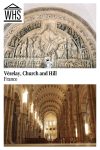Vézelay, Church and Hill
By Rachel Heller
What is Vézelay, Church and Hill?
Vézelay church, more properly called the Church of Saint Mary Magdalene, is a former Benedictine Abbey high on a hill in Burgundy. It was founded in the 9th century but the current church dates to the 12th century. The hill referred to in this UNESCO site’s name is both the location of the church and covers the village of Vézelay, clustered around the church and down the sides of the hill. Farmland and forests surround the hill beyond the limits of the village.
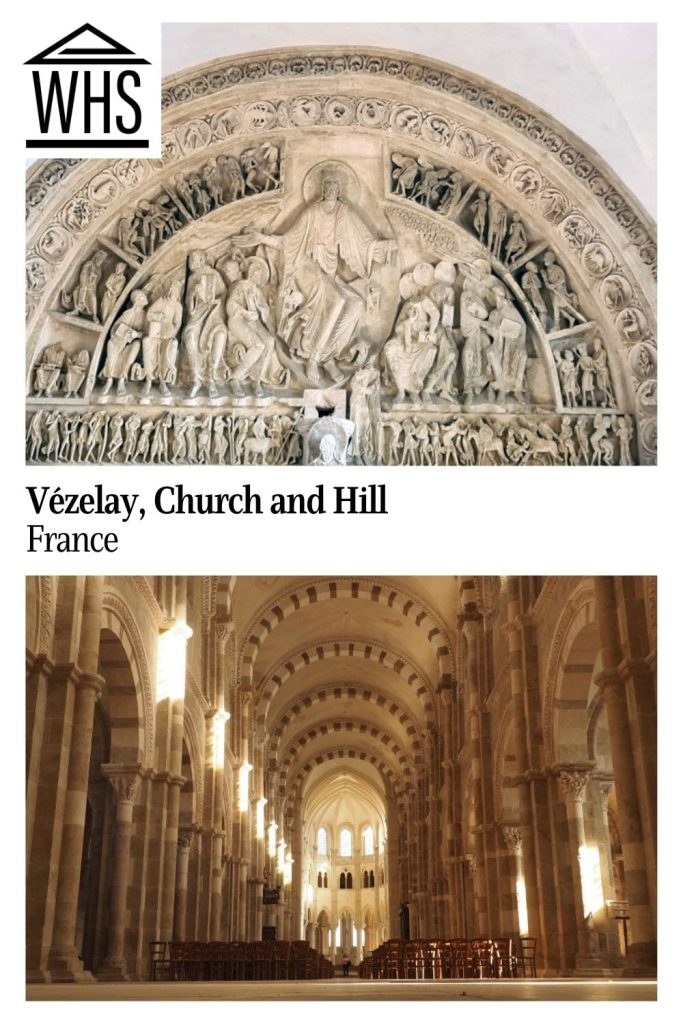
Disclosure: This article contains affiliate links. Making a purchase through an affiliate link will mean a small commission for this website. This will not affect your price. Privacy policy.
Vézelay became a place of pilgrimage in the 11th century when relics of Saint Mary Magdalene were “retrieved” – the word used on an informational sign in the church – from Provence and brought here. It became a destination in itself and also a stop on one of the pilgrimage routes to Santiago de Compostela.
St. Bernard preached the Second Crusade here in front of Henry VII in 1146. Then, according to UNESCO, “in 1190, Richard the Lion-Hearted and Philip Augustus met there to leave for the Third Crusade.” St. Francis of Assisi founded the first Franciscan community in France here as well.
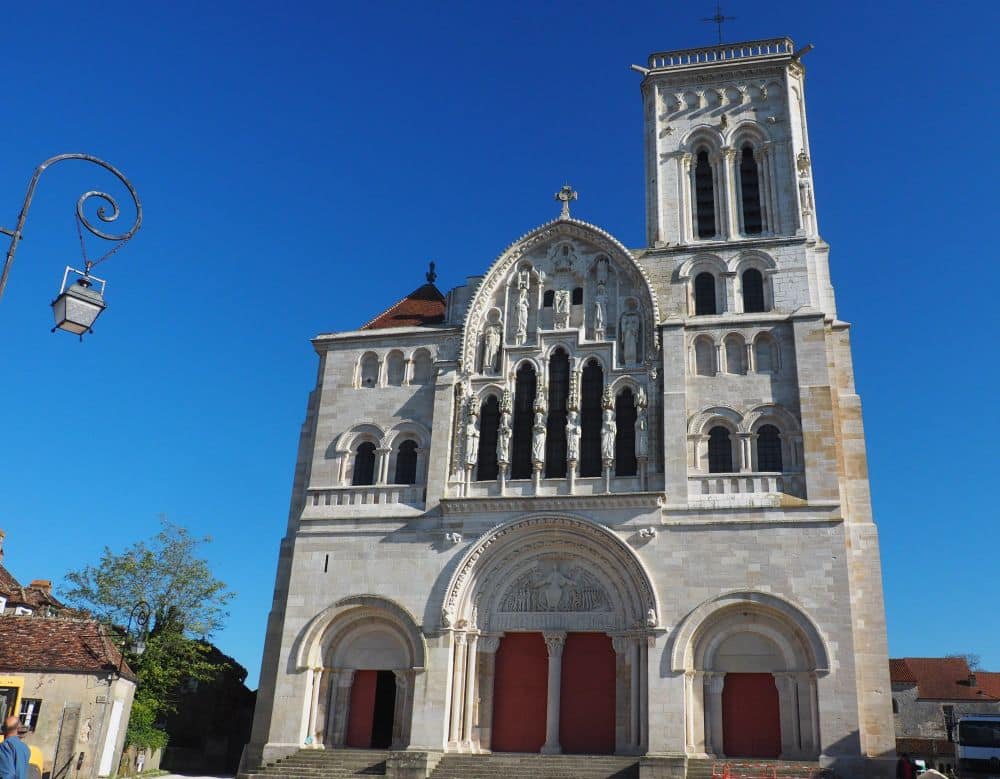
Why is Vézelay a UNESCO World Heritage site?
Vézelay is a UNESCO site both because of the architecture of the church itself and the historical importance of this place. The church is a “masterpiece of Burgundian Romanesque art,” according to UNESCO. This is partly because of the stone arches in two colors and the unusual images carved on the capitals. The truly unique aspect of the church is its narthex – a very large hall inside the main entrance to the church. Huge doors divide the narthex from the nave of the church itself. Above those doors is a remarkable tympanum. Its subject is unusual: Jesus blessing the apostles and sending them out to convert the nations. These elements make the church “one of the major monuments of Western Romanesque art.”
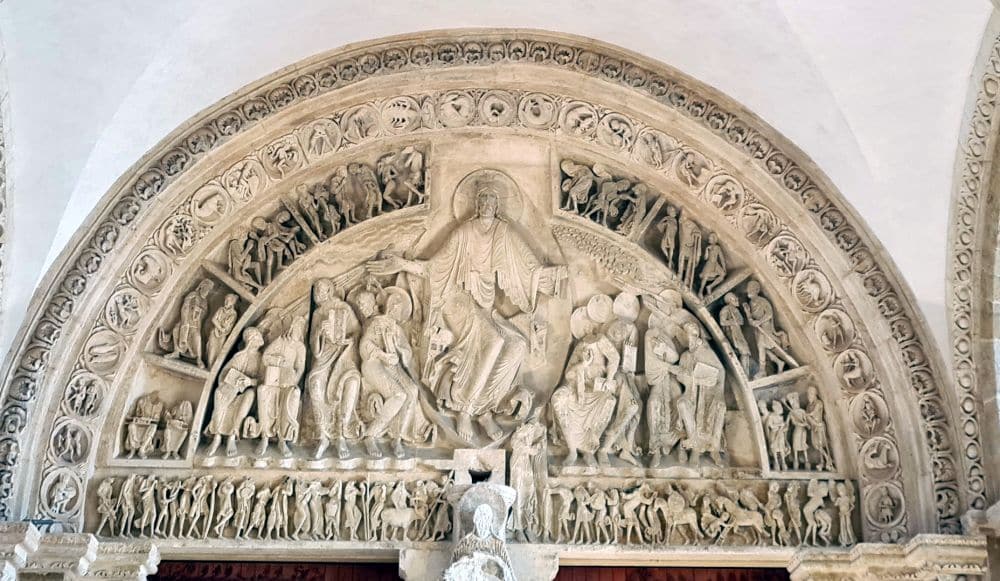
The second reason for Vézelay’s UNESCO designation is simply its historical significance, especially in the 12th century. In that period, “the hill of Vézelay was a choice location where medieval Christian spirituality, reaching a sort of paroxysm, gave rise to various and specific expressions, from prayer and chanson de geste to the Crusades.”
What can you expect on a visit to Vézelay?
As I entered the village, walking from the place where we parked our car, the beauty of the village itself completely distracted me from getting to the church. Charming stone houses line the narrow streets, some with equally charming shops or cafes on their ground floors. Many, though, are just homes. I wanted to walk every single one of the little streets. There are also magnificent views over the surrounding countryside.
Nevertheless, you can’t miss the church at the top of the hill, facing an open plaza. It looks at first like a pretty typical Romanesque church, though quite large. When you enter through the front of the church, you don’t see the whole church. Instead, you enter a huge square hall: the narthex. It took me by surprise not to step into the nave directly, like at most historical Catholic churches.
Beyond the narthex is the nave of the church, built a little bit earlier than the narthex. Its alternating white and black stones, as well as the repeating patterns of the carved detail, reminded me of some churches I’ve seen in Spain in Moorish style. The capitals on the pillars on each side of the nave are all carved with different figures, which I’m sure have a story to them. Some of them seemed to refer to steps in the wine-making process.
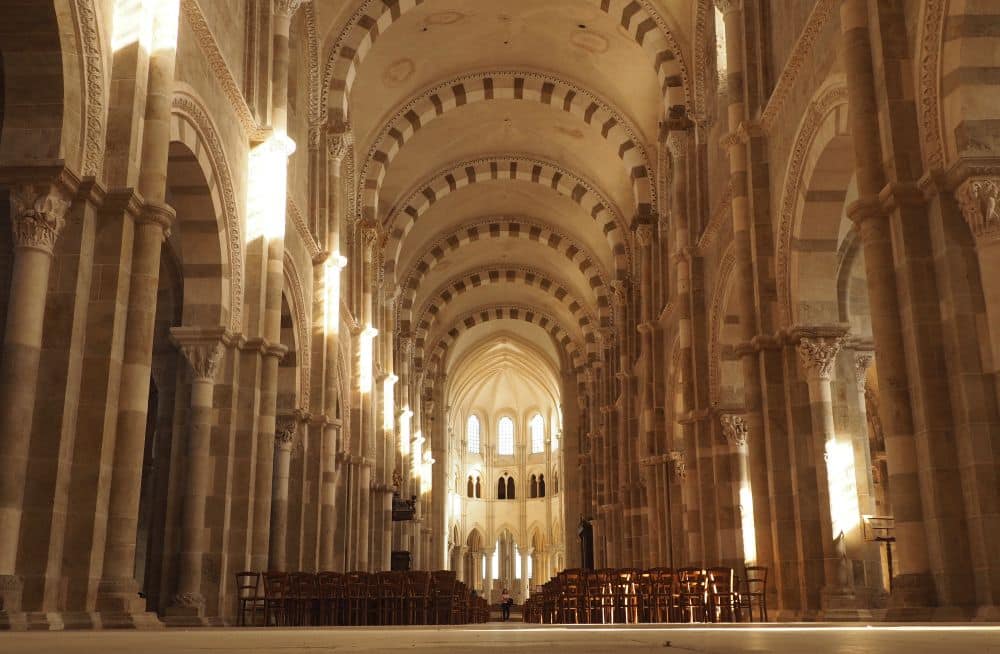
The church is not in the typical cross shape: it’s a long rectangle, rounded at the far end, with small chapels around the altar. That’s not unusual. However, there is only one transept – the right side of the cross as you face the altar – added in the 13th century. It’s now used for quiet prayer.
The crypt below the church is interesting. It’s the earliest still-existing part of the church, dating to the 9th or 10th century. With low Romanesque vaulting above and rough bedrock underfoot, it has an altar at one end. The simply-patterned painting on the wall behind the altar dates to the 12th century. At the other end is a barred alcove holding the relics of Mary Magdalene, again with 12th-century painted walls around it. This space is also used for quiet prayer, since the church still receives pilgrims visiting the relics.
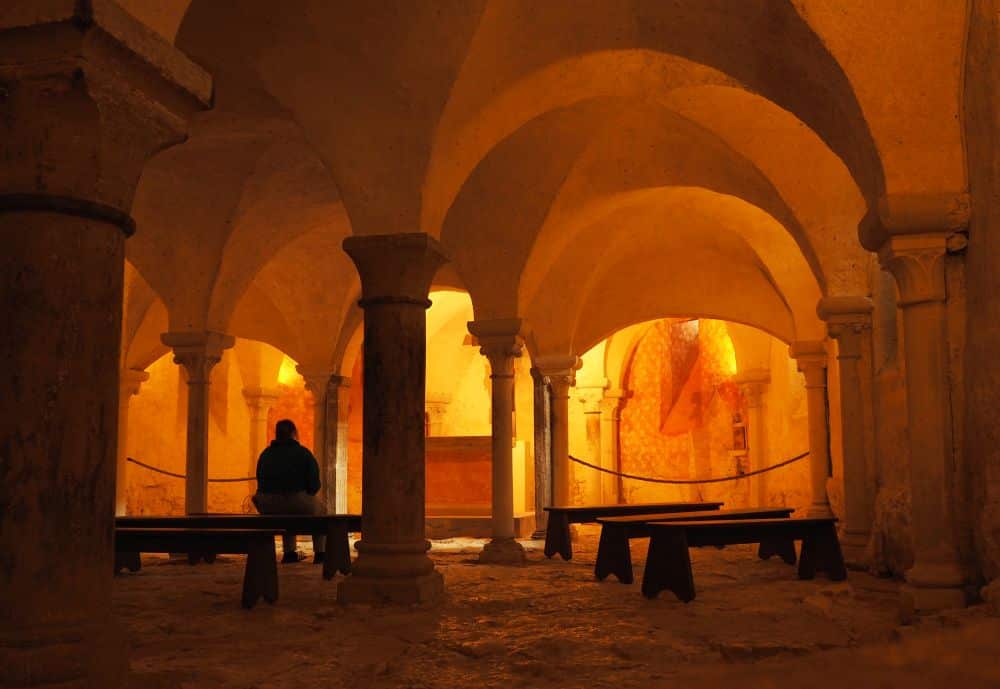
Is Vézelay worth visiting?
While it’s not the most exciting UNESCO site I’ve visited, seeing that beautiful village made me want to check into a hotel and stay a while, just to soak in the atmosphere. It’s just a really pretty place. If you’re in Burgundy anyway – and all of the Climats of Burgundy area to the southeast of here is beautiful – and you have a car, it’s worth spending a morning or afternoon here at least.
Compare rental car offers here.
What sorts of travelers would like Vézelay?
If you like medieval towns, Romanesque architecture, or just scenic beauty, you’d like it here. I don’t think it would be particularly interesting to visit with children, however. Wheelchair users could get around all right. I spotted a ramp at a side door to the church, but the access to the crypt is via stairs. You might need some help in places where the paving stones are rough or the road is steep.
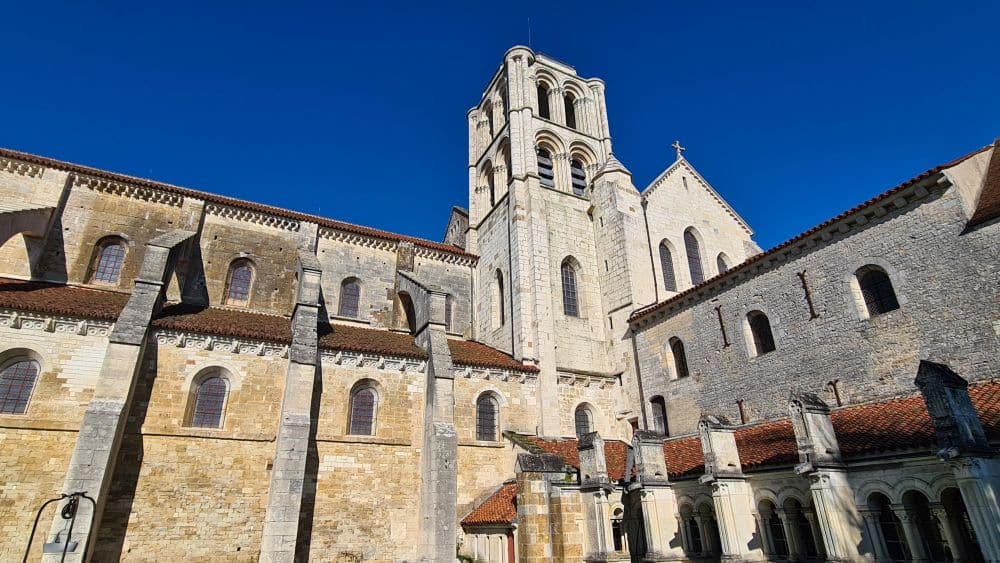
Tips for visiting Vézelay
Assuming you drive to Vézelay, leave your car below the village where there are parking spaces. Walk up through the village to the church. Your first stop – if the shops and cafes don’t distract you – should be the visitor information office, which offers an informational film and arranges tours of the church.
The church is still both a stop on one of the Santiago de Compostela pilgrimage trails and a pilgrimage destination. If you are not a pilgrim yourself, please behave with courtesy toward those who are there for religious reasons. This is especially important in the crypt, where the Mary Magdalene relics are the reason for their visit.
Leave time to explore the village as well as the church. From the rose garden nearby the church you can get some wonderful views. The roses must be wonderful in season. (We visited in late October so we missed the garden at its best.)
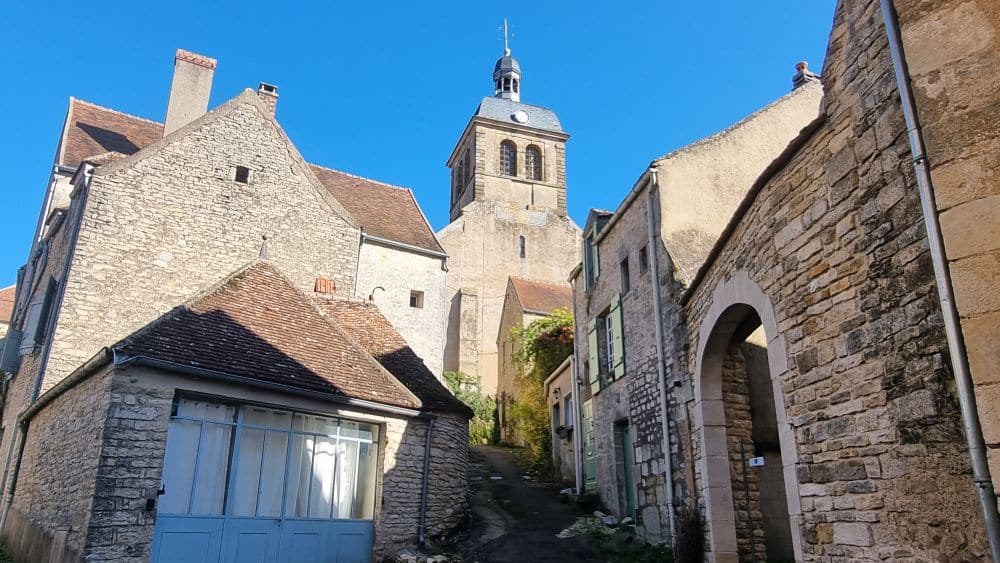
On your way out, you can stop at a small 12th-century church at the base of the hill, included in the UNESCO designation. Called La Cordelle, this is the church the Franciscans built when they first came to France. Today, three friars live there, and an effort is underway to restore it to include spaces for the monks as well as to welcome visitors.
Since we visited in October, there were not very many tourists. I suspect that it gets quite crowded in the summer months. If you can only go there in the summer, it would make sense to visit during the week rather than on a weekend. Visit early in the morning or in the late afternoon to avoid the worst of the crowds and the sun.
Where is Vézelay?
Vézelay is about halfway between Bourges and Dijon and it’s best to drive to get there. Rent a car either in Dijon or on arrival at the airport in Paris.
- From Dijon, it would be very difficult and time consuming – at least 3.5 hours – to get to Vézelay by public transportation. It would involve several changes of bus or train. By car it’ll take about 1.5 hours.
- From Bourges it’s even worse, taking at least 8 hours by public transportation, while driving will take 2 hours.
- From Paris it’s actually easier. You can either drive to Vézelay in 2.5 hours or take the SNCF train from Paris-Bercy in 2.5 hours. Get off at the Semizelle-Vézelay station. From there you take a bus to Vézelay in 15 minutes. Check ahead because the train only leaves a couple of times a day.
For more information about Vézelay, its opening hours and admission fees, see the tourism board’s website.
Have you been to Vézelay? If so, do you have any additional information or advice about this UNESCO World Heritage site? Please add your comments below!

